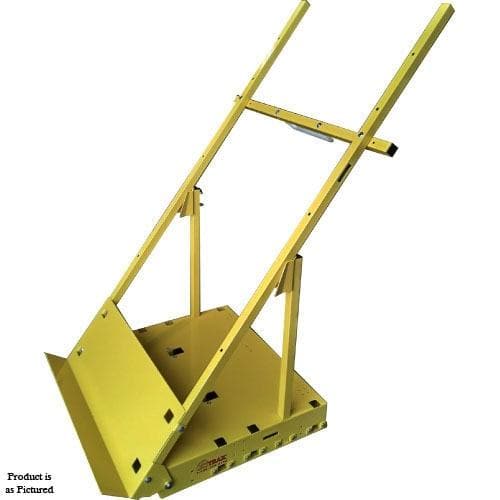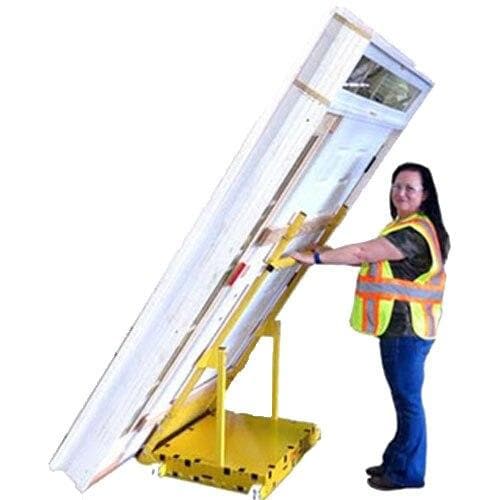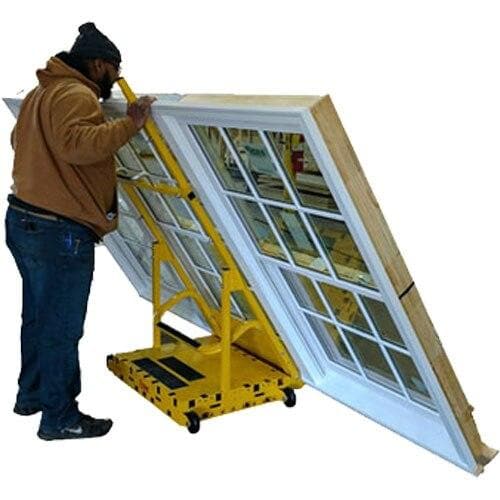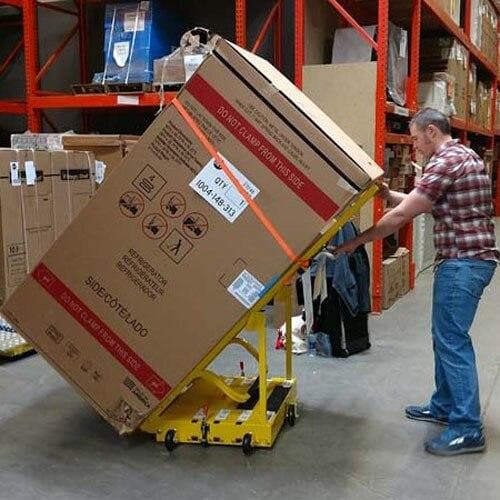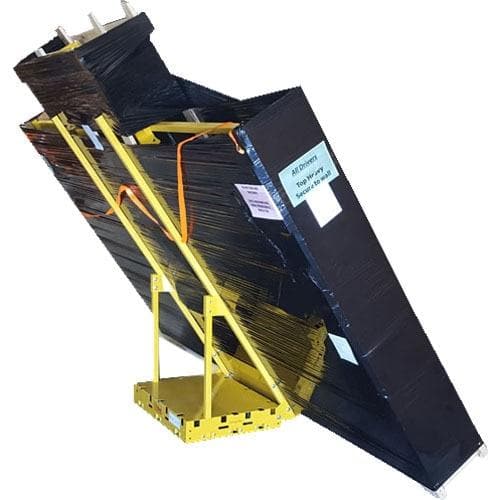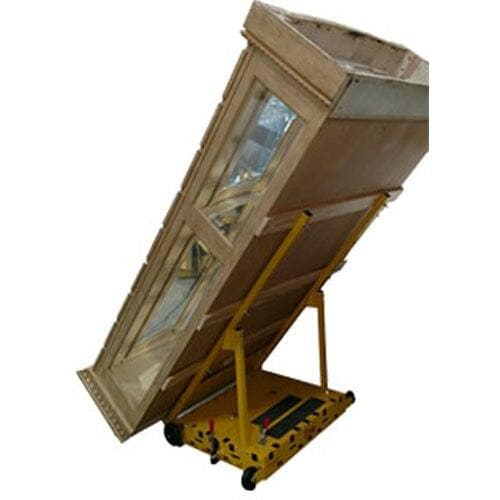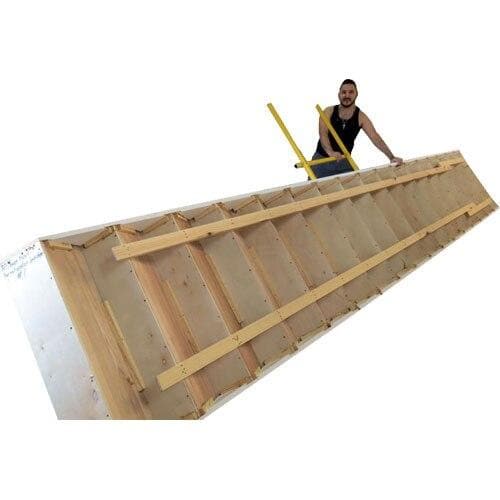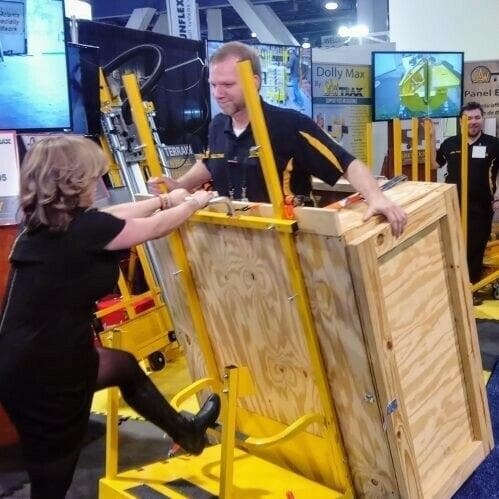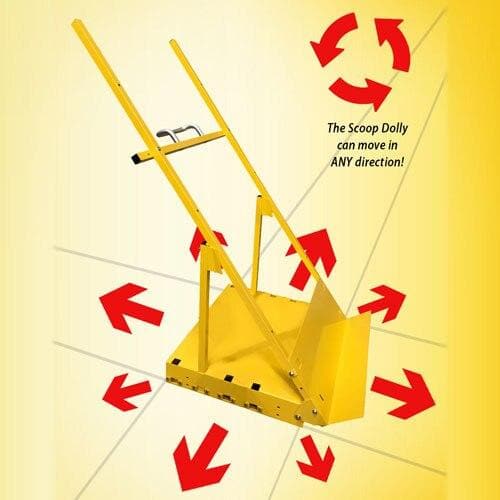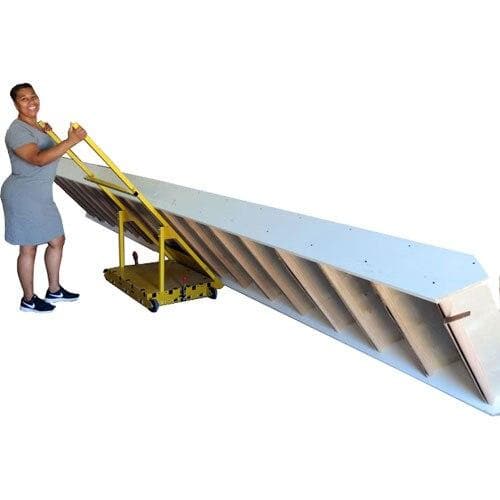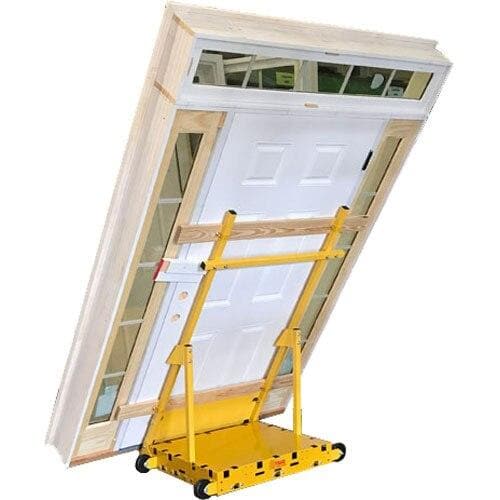Scoop Dolly
Interested in financing? Discover your options here.
Scoop Dolly is backordered and will ship as soon as it is back in stock.
Safe & Secure Payments.
Move your heavy, tall and long products around your warehouse or onto a truck safely, without a forklift.
Brakes, Floor Leverage Bar, Directional Wheel, Dock Transition Wheels, and Load Puller Stick are optional but not included with base unit.
Tall, long and narrow objects like door units, staircases, window units, panel saws and prefabricated walls are difficult to move or load onto a truck. The Scoop Dolly makes loading or unloading these top-heavy objects a breeze. With the optional leverage bar, other heavy objects like bureaus and furniture (3 ft. tall or more) can also be loaded easily. The unique design allows the dolly to operate like a hand truck on a dolly. Unlike standard hand trucks, the object can be moved in any direction making long objects easy to move. Unlike conventional door dollies or drywall carts, the carrying section pivots instead of the entire dolly. This makes the dolly ergonomically easy to use by one person. Once loaded and tilted back, the load on the Scoop Dolly remains stable without needing to be supported by the operator. Load it and roll it or walk away!
Our standard dolly can carry up to 800 lbs., but you can upgrade to a heavy duty 1000 lb. You can also add Ramp Wheels or the Leverage Bar option. Call Us for pricing on these great accessories!
Features and Benefits
Necessity was the mother of the Scoop Dolly.
It was originally designed to move our 10 ft. long, 94 in. tall, 500 lb. crated panel saws onto the freight trucks. This was typically done with one person on a forklift and one person steadying the load at the far end. This was a tricky dance between the forklift operator and the "point" man. With the weight of the forklift entering a truck, the point man could be crushed by the panel saw falling over or with a slip of the foot of the forklift operator. So, the President of Saw Trax came up with a design that has been refined for many other applications.
Unlike other "door dollies" where the entire dolly is lifted up on one end and someone else has to tilt the item onto and off of it, the scoop dolly has the lifting mechanism tilt for easy one person uses. This ergonomic design cuts the needed people to use the dolly in half. It allows one person to work faster and do twice the work with half the people.
The "Scoop Dolly" has tilt legs that can adjusted to vary the angle of the load to safely keep the center of gravity over the dolly. The dolly has omni-directional casters so the load can be moved in any direction.
The Scoop Dolly is a pivoting hand truck-like device that is easy to slide under objects while the dolly stays flat on the floor. Then the object is tilted back onto the dolly using the scoop. This type of pivoting handle keeps the casters flat on the floor, so they are not angled causing the internal bearings to fail. This type of design also allows you to vary the angle of the load by varying the position of the support legs.
The scoop dolly excels at moving large, bulky, hard to handle items that rest of the dolly world cannot begin to move. Fully framed doors and windows, large appliances, kitchen and bath inserts, and even pre-manufactured cabinet sections can be quickly and easily moved around in a manufacturing warehouse or distribution center with the scoop dolly! The all-caster low profile design easily glides across the floor.
With the addition of the Leverage Handles, wider objects can be carried on the scoop dolly like heavy boxed furniture, appliances, etc.
With the addition of the Dock Transition Wheels, the dolly glides over the loading dock transitions onto or off freight trucks.
Now long, tall, heavy objects can be loaded more quickly, more safely and less expensively!
Doors and Windows
Doors and window units can be quite tall, long, and heavy. Moving them has been a chore - until now. Simply tilt the door/window unit and maneuver the tongue of the scoop dolly under the center of what you want to move. Hold the unit against the vertical handles and tilt back. The dolly is on all casters so maneuvering the unit around corners and cluttered walkways is easy. When we tried this dolly at a local manufacturer, you could see the smiles on the employees faces stretch from ear to ear.
It was developed to carry 10 ft. + crated vertical panel saws weighing 500+ lbs. Put this technology to work for you and work more efficiently, more safely, with less fatigued workers.
Staircase Manufacturing
Our insurance agent thought that we should show our panel saw mover to one of his clients, a stair manufacturer. When we took it over and demonstrated it to them, they were amazed. They had told us that it had taken 4 guys to move that same staircase to its location and now he could move it with just one. That's when we knew we were onto something. At another of our agent's staircase clients, the same thing happened with the same demo. We then joined the SMA (Staircase Manufacturers Association) because every staircase manufacturer has the same problems. This makes moving a staircase to the staging area and from the staging area onto a truck, an easy, non-lifting, one man job. So, ask yourself, can you afford to have 4 men, do a one-man job?
Why we call the yel-Low Dolly "Bullet Proof" is explained in the video to the right. The one piece "Unibody" 12-gauge steel body is formed with the sides folded down and then folded in to form the bottom. The side corners are welded first. The bottom seems where the two sides come together are then ground at a 45 on each side creating more surface area for the weld to bond to. The weld is then checked for strength with a mallet. The weld on the bottom and side are then ground down smooth.
A bushing is inserted into two sides of the body using a mallet. This is the connecting point for the scoop and dolly body. A hardened steel 3/8" bolt is the pivot mechanism between the bushings in the scoop body and the bushings in the scoop plate.
The brackets used to hold the support posts are attached from the outside in and bolted in place. Attaching the bracket from the outside vs. the inside is much stronger because the bracket would have to shear for the post support to fail vs. breaking the bolt heads to fail if it were attached from the inside.
Finally, the industrial poly on iron casters is attached to the decking of the box keeping the box very close to the floor for easy loading, (about the height of a pallet). The side walls act as shields protecting the casters from obstacles that could jam or break the caster.

